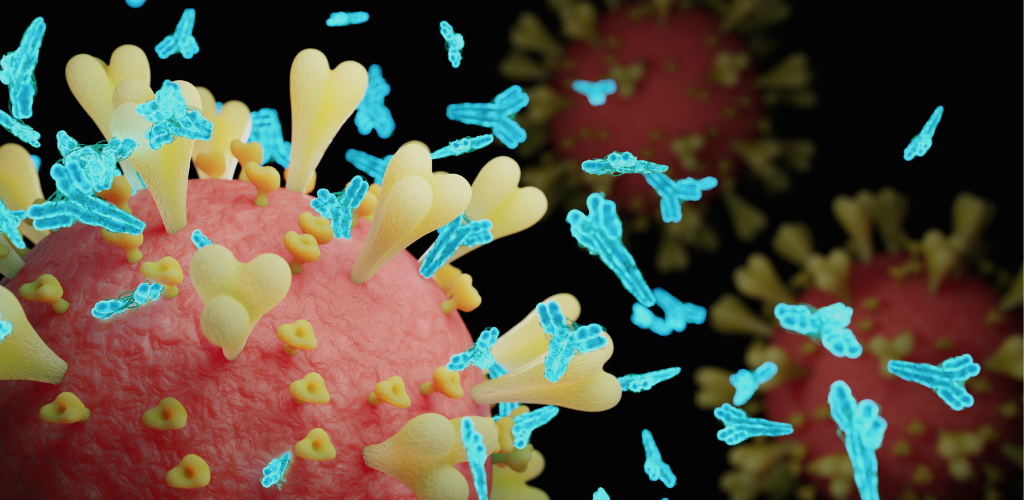Antibody-antigen docking is a special case of protein-protein docking, where one of the proteins is an antibody and the other is an antigen. Antibodies are proteins produced by the immune system that can recognize and bind to specific antigens, such as viruses, bacteria, or toxins. Antigens are molecules that can elicit an immune response by binding to antibodies. The structure and affinity of antibody-antigen complexes are important for understanding the immune system and developing vaccines and therapeutics.
However, antibody-antigen docking is challenging, as antibodies have a high degree of diversity and specificity, and antigens can have various shapes and sizes. Moreover, the experimental data on antibody-antigen interactions are scarce and noisy, making it difficult to train and validate AI/ML models. Therefore, antibody-antigen docking requires specialized methods that can account for the unique features and challenges of this problem.
AI/ML methods for antibody-antigen docking can be classified into two categories: structure-based and sequence-based.
Structure-based methods
Structure-based methods use the 3D structures of the antibody and the antigen as input, and perform docking based on the geometric and physicochemical properties of the proteins. These methods can be further divided into two types: template-based and ab initio.
Template-based methods
Template-based methods use the structures of known antibody-antigen complexes as templates to guide the docking process. These methods assume that the antibody and the antigen share some structural similarity with the template complex, and use the template to constrain the search space, align the proteins, or score the docking poses. Template-based methods can reduce the computational cost and increase the accuracy of docking, but they depend on the availability and quality of the template complexes.
Some examples of template-based methods are:
- PIGS: PIGS is a docking method that uses a graph-based representation of the protein structures and a graph-matching algorithm to find the best alignment between the antibody and the antigen. It uses the structures of known antibody-antigen complexes as templates to construct the graphs and match them with the query proteins.
- HADDOCK: HADDOCK is a docking method that uses a combination of simulated annealing, molecular dynamics, and energy minimization to sample and refine the docking poses. It uses the structures of known antibody-antigen complexes as templates to provide distance restraints and interface information for the docking process.
- ClusPro-DC: ClusPro-DC is a docking method that uses a fast Fourier transform (FFT) to generate docking poses and a hierarchical clustering algorithm to cluster them. It uses the structures of known antibody-antigen complexes as templates to filter the docking poses based on the similarity of the interface residues.
Ab initio methods
Ab initio methods do not use any template structures, but instead rely on the intrinsic properties of the antibody and the antigen to perform docking. These methods do not assume any structural similarity between the query proteins and the template complexes, and can handle novel antibody-antigen interactions. However, ab initio methods are more computationally expensive and less accurate than template-based methods, as they have to search a larger and more diverse conformational space.
Some examples of ab initio methods are:
- ZDOCK: ZDOCK is a docking method that uses an FFT to generate docking poses and a neural network to select the best docking pose based on the confidence score. It does not use any template structures, but instead uses a shape complementarity function and a statistical potential to score the docking poses.
- ATTRACT: ATTRACT is a docking method that uses a coarse-grained representation of the protein structures and a Monte Carlo algorithm to sample the docking poses. It does not use any template structures, but instead uses a physics-based potential and a knowledge-based potential to score the docking poses.
- DeepDock: DeepDock is a deep learning model that uses a graph neural network (GNN) to perform both rigid body docking and flexible refinement. It does not use any template structures, but instead uses the protein-protein interactions and the binding affinity data to predict the docking pose and the conformational changes of the proteins simultaneously.
Sequence-based methods
Sequence-based methods use the amino acid sequences of the antibody and the antigen as input, and perform docking based on the sequence features and patterns of the proteins. These methods do not require the 3D structures of the proteins, which can be difficult or impossible to obtain experimentally or computationally. However, sequence-based methods are less accurate and reliable than structure-based methods, as they have to infer the structural and functional information from the sequences.
Some examples of sequence-based methods are:
- mCSM-AB: mCSM-AB is a web server for predicting changes in antibody-antigen affinity upon mutation, using graph-based signatures. It uses the amino acid sequences of the antibody and the antigen to construct the graphs and compute the graph kernels, which are then used as input for a support vector machine (SVM) to predict the affinity changes.
- ADAPT: ADAPT is an affinity maturation platform that interleaves predictions and testing to optimize the antibody-antigen binding. It uses the amino acid sequences of the antibody and the antigen to design and rank the antibody variants based on a deep learning model that learns from the binding affinity data.
- PECAN: PECAN is a deep learning model that predicts the antibody-antigen interface residues based on the amino acid sequences of the proteins. It uses a graph convolutional network (GCN) to encode the sequence features and an attention mechanism to identify the interface residues.




